
Two companies, both alike in miso, in fair Okazaki where we lay our scene.
A lot of times, when shopping for fermented foods and drinks like soy sauce or sake, the makers might boast that a certain type of bacteria or yeast is used. But how much does that really play into the final result?
Since these microorganisms drive the fermentation processes, they are undoubtedly important, but when it comes down to taste, aroma, and texture, it would certainly seem that a food’s more substantial ingredients play a much bigger role.
Our reporter Haruka Takagi recently found herself in a unique position to learn more about this when visiting a pair of miso producers in Okazaki City, Aichi Prefecture. This area is known for its hatcho miso, which is made from only soybeans and salt and is used in beloved local dishes like a type of stew called doteni and miso-nikomi udon.
The two companies that produce hatcho miso are Maruya Hatcho Miso and Kakukyu. Not only are both these companies in Okazaki, but they are right next door to each other. This allowed Haruka to take a tour of both companies in a single day, and try some ice cream sprinkled with miso as well.
▼ This treat from Kakukyu cost 400 yen (US$2.82).
The process both companies use to make hatcho miso is very much easier said than done, and goes as follows:
1 – Select the best soybeans
2 – Wash the beans and soak them in water to soften them
3 – Steam the beans and roll them into balls called “misotama.” This is where the koji mold is added. Koji mold is the fungus that activates the fermentation process for miso, as well as sake and soy sauce.
4 – Let the misotama sit for four days while the koji mold grows
5 – Put the misotama into a wooden barrel with salt water. A craftsperson then steps all over it to remove the air and harden the mixture.
6 – The craftsperson then piles large stones on the mix one by one and lets it ferment for two summers and two winters.
Haruka was very impressed seeing these massive six-ton barrels that were about 100 years old filled with rocks. Photos weren’t allowed inside but she drew a picture to give us an idea.
While on tours of both companies, she could also confirm that they used the same ingredients and equipment. They were also right next to each other, so they operated in the exact same climate and environmental conditions. The only thing different between them was the type of koji mold they used.
So, she bought a pack of each company’s hatcho miso and did a comparative taste test to see how much of a difference koji mold made.
Looking at the label for each pack of miso, the ingredients were clearly the same because there were only two: soybeans from the Mikawa region and salt. They had slightly different nutritional information, which might say something about the accuracy of how those figures are determined.
Opening up each package, they both had the same very dark hue with a moistness similar to modeling clay. When Haruka looked extra carefully, she could find that the Maruya Hatcho Miso had a slightly reddish tint and a bit of a rougher texture.
▼ Maruya Hatcho Miso, on the left, and Kakukyu’s on the right (The Kakukyu looks shinier because it was in a plastic bag)
She scooped out a bit of each with a spoon and beneath the surface the subtle differences in texture could be better seen.
▼ Left: Maruya Hatcho Miso, Right: Kakukyu
But the real difference lies in how they taste, so Haruka popped the spoonful of Maruya Hatcho into her mouth.
She was bracing herself because the darker color led her to assume it would have a really sharp taste. However, it wasn’t very salty at all. Instead, it had a nutty taste with a chocolatey rich mellowness that spread through her mouth, followed by a bitter and slightly sour aftertaste.
A few months ago, she tried hatcho miso powder that can be used as a topping for various dishes, but the taste of the real thing was much deeper. If she didn’t already know it was only made from soybeans and salt, she’d have sworn it had some additional seasoning in it.
After cleansing her palate, Haruka tried the spoonful of Kakukyu hatcho miso.
This had that same nutty flavor and richness, but much to her surprise, unlike the Maruya Hatcho Miso, the Kakukyu had a distinctly sharper saltiness that hit her tongue instantly. It was followed by an aftertaste that was more bitter and less sour than the previous spoonful.
Haruka felt that the Kakukyu would be more well-suited for first-time hatcho miso eaters because the sourness is reduced, but both were very delicious.
And it would appear that two misos made in the same way, with the same ingredients and under the same conditions, really do taste noticeably different with different koji molds. That being said, she felt she might not have sophisticated enough taste buds to spot the same difference when used in cooking.
▼ It tastes great regardless.
It’s also important to note that neither koji mold was superior to the other. They just produced different tastes, so it’s always best to try out lots of different kinds and find your own favorite fermented food.
Images: ©SoraNews24
● Want to hear about SoraNews24’s latest articles as soon as they’re published? Follow us on Facebook and Twitter!
[ Read in Japanese ]

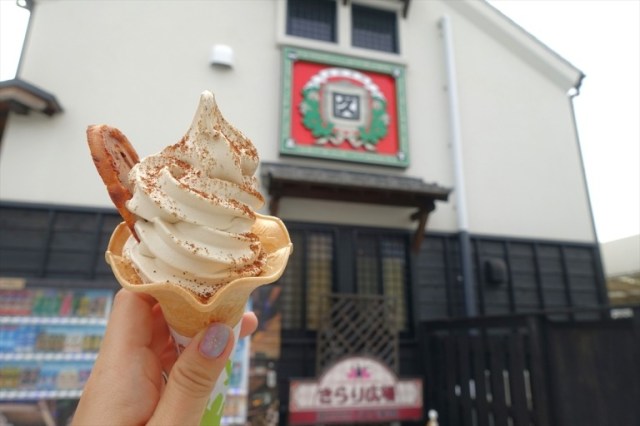
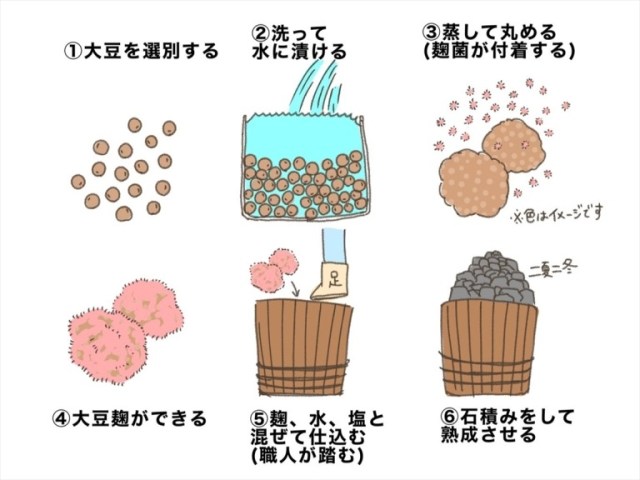
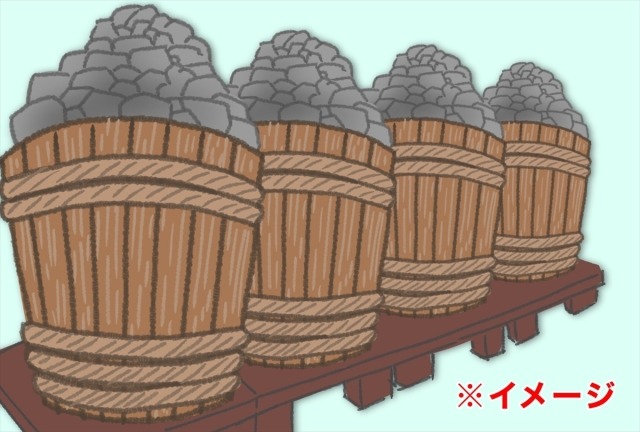
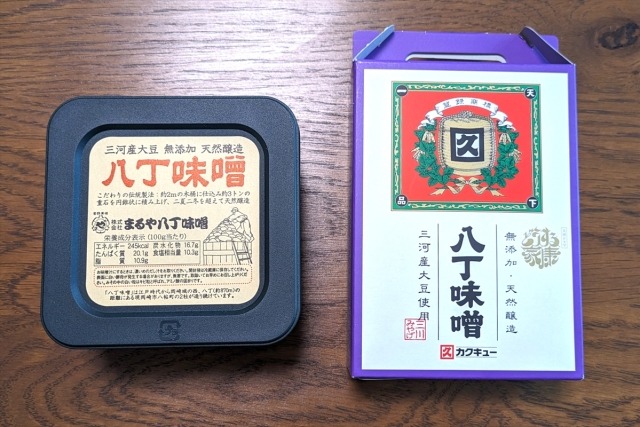

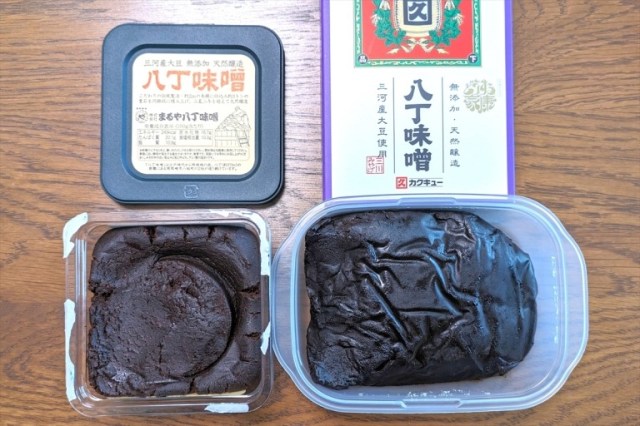
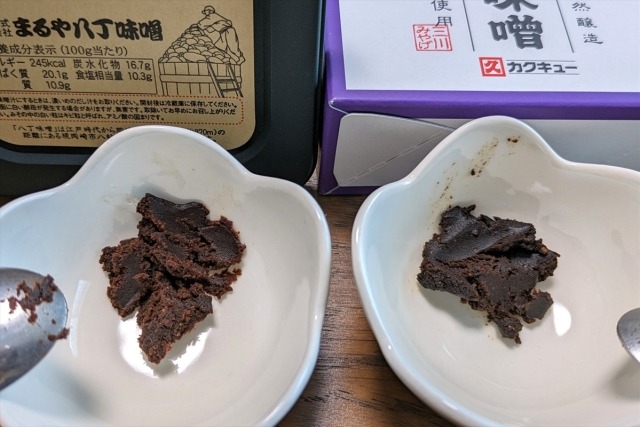
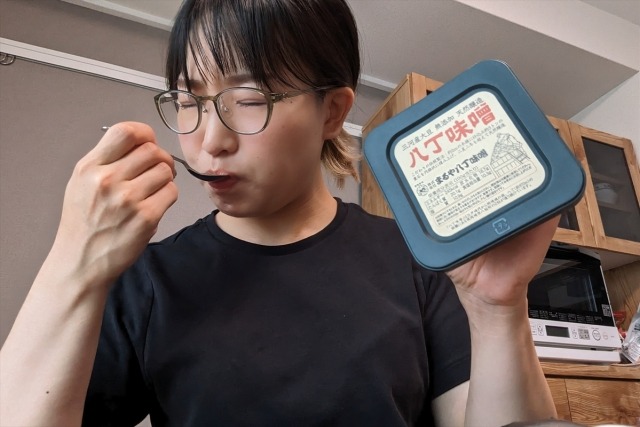
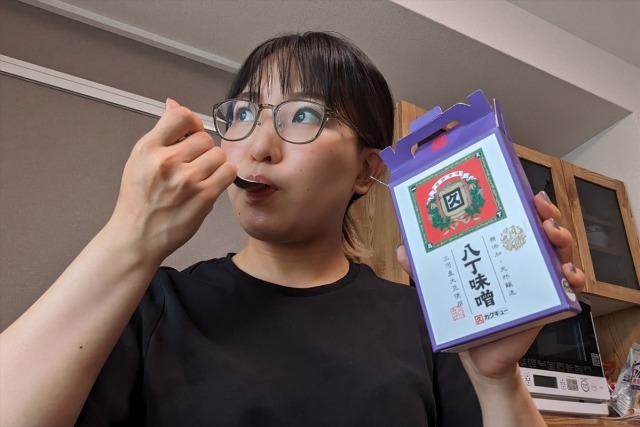
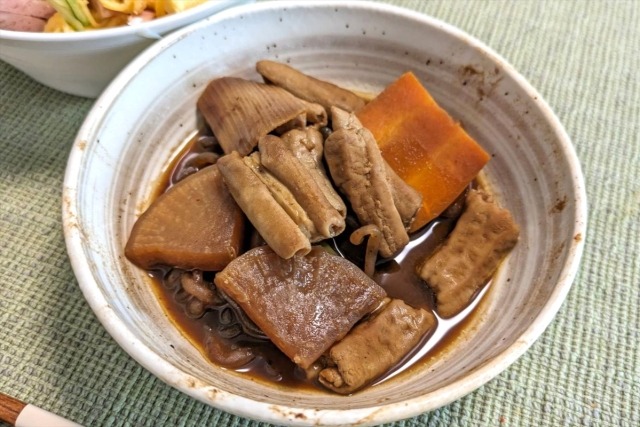
 Miso powder on ice cream? Don’t knock it until you’ve tried it, we say!【Taste test】
Miso powder on ice cream? Don’t knock it until you’ve tried it, we say!【Taste test】 7 great places to see Mt. Fuji from without having to climb it
7 great places to see Mt. Fuji from without having to climb it Black Thunder chocolate-bar-shaped fishing lures coming next year
Black Thunder chocolate-bar-shaped fishing lures coming next year New Japanese menstrual product seeks to help women spot unidentified iron deficiencies
New Japanese menstrual product seeks to help women spot unidentified iron deficiencies Japan’s most popular maid cafe, Akiba Zettai Ryoiki, opens new “Maid Cafe Winery” in Akihabara
Japan’s most popular maid cafe, Akiba Zettai Ryoiki, opens new “Maid Cafe Winery” in Akihabara Demon Slayer anime restaurant coming to Universal Studios with Hashira meals, life-size figures
Demon Slayer anime restaurant coming to Universal Studios with Hashira meals, life-size figures Godzilla-shaped ice cream on sale in Tokyo near the sight his most adorable rampage
Godzilla-shaped ice cream on sale in Tokyo near the sight his most adorable rampage Is China’s don’t-go-to-Japan warning affecting tourist crowds in Tokyo’s Asakusa neighborhood?
Is China’s don’t-go-to-Japan warning affecting tourist crowds in Tokyo’s Asakusa neighborhood? Senkoji: The Japanese temple that’s more like a theme park to heaven and hell
Senkoji: The Japanese temple that’s more like a theme park to heaven and hell Studio Ghibli releases new merchandise to celebrate Laputa: Castle in the Sky anniversary
Studio Ghibli releases new merchandise to celebrate Laputa: Castle in the Sky anniversary Akasaka’s totally non-creepy android maid cafe
Akasaka’s totally non-creepy android maid cafe Disillusionment at Tsukiji’s tourist-target prices led us to a great ramen restaurant in Tokyo
Disillusionment at Tsukiji’s tourist-target prices led us to a great ramen restaurant in Tokyo Japan may add Japanese language proficiency, lifestyle classes to permanent foreign resident requirements
Japan may add Japanese language proficiency, lifestyle classes to permanent foreign resident requirements Lacquerware supplier to emperor of Japan and Pokémon team up for new tableware
Lacquerware supplier to emperor of Japan and Pokémon team up for new tableware Starbucks Japan releases new zodiac chilled cup drink for 2026
Starbucks Japan releases new zodiac chilled cup drink for 2026 7-Eleven Japan’s ramen-cooking robot whipped us up a bowl of noodles【Taste test】
7-Eleven Japan’s ramen-cooking robot whipped us up a bowl of noodles【Taste test】 Japan’s otoshidama tradition of giving kids money at New Year’s gets a social welfare upgrade
Japan’s otoshidama tradition of giving kids money at New Year’s gets a social welfare upgrade Cyberpunk anime meets traditional culture in Ghost in the Shell gold leaf Japanese changing screens
Cyberpunk anime meets traditional culture in Ghost in the Shell gold leaf Japanese changing screens Hello Kitty Choco Egg figures are an adorable trip through three periods of Japanese pop culture【Pics】
Hello Kitty Choco Egg figures are an adorable trip through three periods of Japanese pop culture【Pics】 7-Eleven Japan starts new temporary luggage storage service in over 300 branches
7-Eleven Japan starts new temporary luggage storage service in over 300 branches Can a dirty butthole make you filthy rich in Japan? We’re starting a New Year’s lottery experiment
Can a dirty butthole make you filthy rich in Japan? We’re starting a New Year’s lottery experiment Japan’s human washing machines will go on sale to general public, demos to be held in Tokyo
Japan’s human washing machines will go on sale to general public, demos to be held in Tokyo Starbucks teams up with 166-year-old Kyoto doll maker for Year of the Horse decorations【Photos】
Starbucks teams up with 166-year-old Kyoto doll maker for Year of the Horse decorations【Photos】 Tokyo considering law requiring more trash cans following litter increase in heavily touristed area
Tokyo considering law requiring more trash cans following litter increase in heavily touristed area Tokyo’s Tsukiji sushi neighborhood asks tour groups to stay away for the rest of the month
Tokyo’s Tsukiji sushi neighborhood asks tour groups to stay away for the rest of the month Nintendo’s Kirby now delivering orders at Kura Sushi restaurants, but not in Japan
Nintendo’s Kirby now delivering orders at Kura Sushi restaurants, but not in Japan Tokyo event lets you travel back in time, for free, to celebrate 100 years since Showa era start
Tokyo event lets you travel back in time, for free, to celebrate 100 years since Showa era start Sanrio theme park in Japan announces plans to expand into a Sanrio resort
Sanrio theme park in Japan announces plans to expand into a Sanrio resort Stamina-destroying “Paralysis Noodles” are Tokyo’s newest over-the-top ramen innovation
Stamina-destroying “Paralysis Noodles” are Tokyo’s newest over-the-top ramen innovation Survey asks foreign tourists what bothered them in Japan, more than half gave same answer
Survey asks foreign tourists what bothered them in Japan, more than half gave same answer Japan’s deadliest food claims more victims, but why do people keep eating it for New Year’s?
Japan’s deadliest food claims more victims, but why do people keep eating it for New Year’s? We deeply regret going into this tunnel on our walk in the mountains of Japan
We deeply regret going into this tunnel on our walk in the mountains of Japan Studio Ghibli releases Kodama forest spirits from Princess Mononoke to light up your home
Studio Ghibli releases Kodama forest spirits from Princess Mononoke to light up your home Major Japanese hotel chain says reservations via overseas booking sites may not be valid
Major Japanese hotel chain says reservations via overseas booking sites may not be valid Put sesame oil in your coffee? Japanese maker says it’s the best way to start your day【Taste test】
Put sesame oil in your coffee? Japanese maker says it’s the best way to start your day【Taste test】 The top 10 annoying foreign tourist behaviors on trains, as chosen by Japanese people【Survey】
The top 10 annoying foreign tourist behaviors on trains, as chosen by Japanese people【Survey】 No more using real katana for tourism activities, Japan’s National Police Agency says
No more using real katana for tourism activities, Japan’s National Police Agency says Starbucks Japan reveals new sakura drinkware collection, inspired by evening cherry blossoms
Starbucks Japan reveals new sakura drinkware collection, inspired by evening cherry blossoms
Leave a Reply